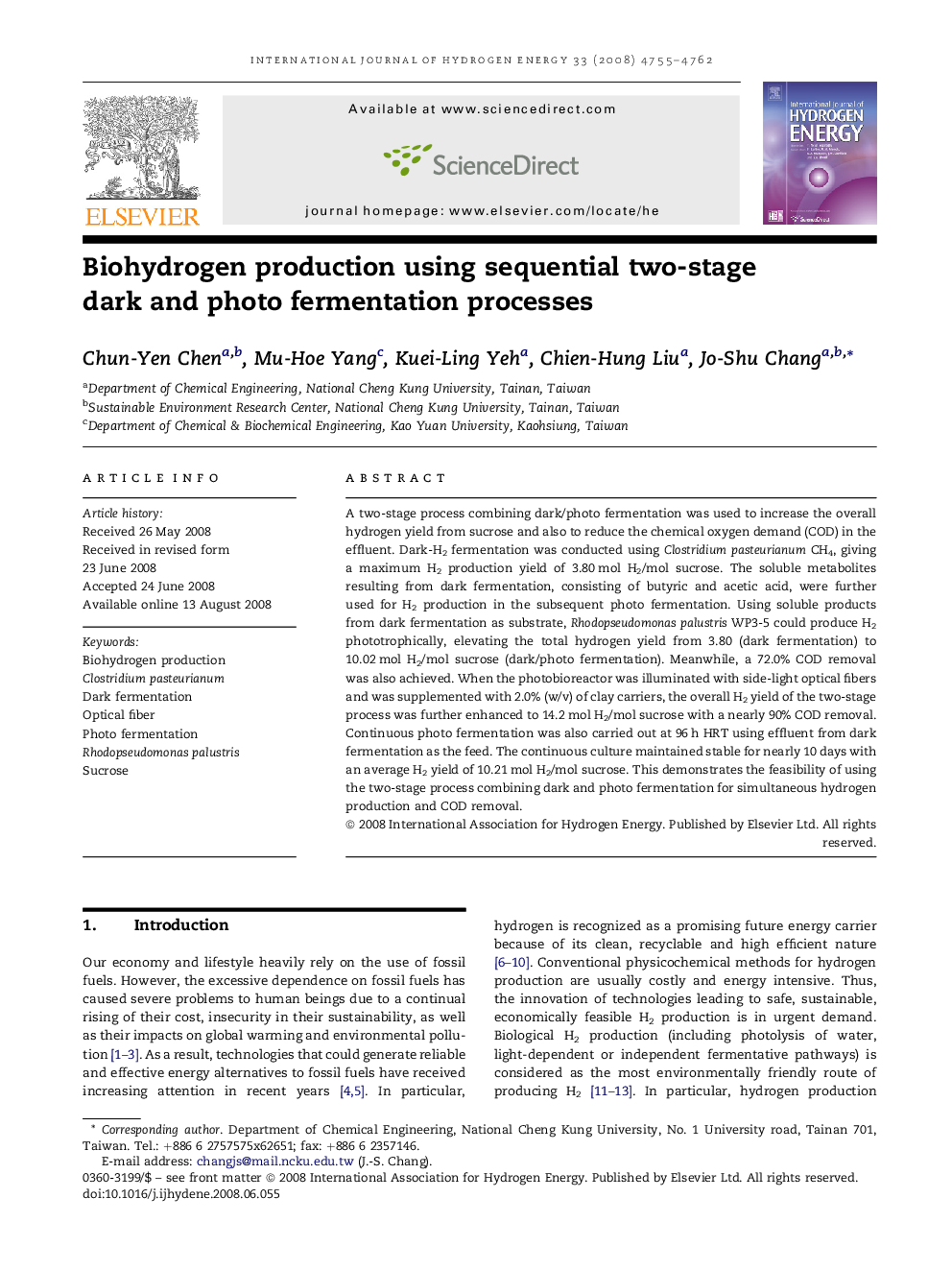| Article ID | Journal | Published Year | Pages | File Type |
|---|---|---|---|---|
| 1279216 | International Journal of Hydrogen Energy | 2008 | 8 Pages |
A two-stage process combining dark/photo fermentation was used to increase the overall hydrogen yield from sucrose and also to reduce the chemical oxygen demand (COD) in the effluent. Dark-H2 fermentation was conducted using Clostridium pasteurianum CH4, giving a maximum H2 production yield of 3.80 mol H2/mol sucrose. The soluble metabolites resulting from dark fermentation, consisting of butyric and acetic acid, were further used for H2 production in the subsequent photo fermentation. Using soluble products from dark fermentation as substrate, Rhodopseudomonas palustris WP3-5 could produce H2 phototrophically, elevating the total hydrogen yield from 3.80 (dark fermentation) to 10.02 mol H2/mol sucrose (dark/photo fermentation). Meanwhile, a 72.0% COD removal was also achieved. When the photobioreactor was illuminated with side-light optical fibers and was supplemented with 2.0% (w/v) of clay carriers, the overall H2 yield of the two-stage process was further enhanced to 14.2 mol H2/mol sucrose with a nearly 90% COD removal. Continuous photo fermentation was also carried out at 96 h HRT using effluent from dark fermentation as the feed. The continuous culture maintained stable for nearly 10 days with an average H2 yield of 10.21 mol H2/mol sucrose. This demonstrates the feasibility of using the two-stage process combining dark and photo fermentation for simultaneous hydrogen production and COD removal.
